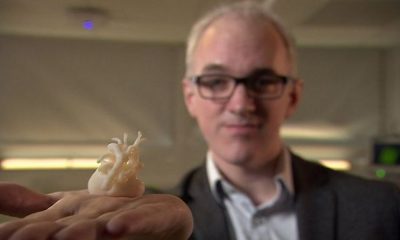All babies have the natural instinct to suck their thumbs. It starts out as a comfort mechanism, when young infants suck on their fingers, toys, or pacifiers to help soothe themselves and often to help them fall asleep. There is nothing wrong with this while the child is young. A general rule of thumb is that by the time the child’s permanent teeth start to come through, it’s a good time to start breaking he habit. While children are young, their jaw bone and roof of their mouths are growing and can be changed by the sucking pressure. Usually between the ages of 2 and 4 is when children start to break the habit.
What Does It Do?
Depending on how old the child is, what the child is sucking on, like a pacifier or finger, how hard they are sucking, and for how long can all be factors that determine the outcome of the thumb sucking, according to the American Dental Association (ADA). When children excessively suck their thumbs, the upper teeth start to protrude out and the lower teeth protrude in to make room for the thumb to sit in the mouth which causes the teeth to form in an open bite. At the same time, the palate or “roof” of the mouth becomes abnormally arched from the pressure created while sucking.
What Should I Be Looking For?
Once adult teeth start to come in, try to help your child to stop sucking their thumb, finger, pacifier, etc. If you start to notice that your child’s front teeth are poking out instead of meeting end to end, consult your dentist for an opinion. If your child is still sucking their thumb after the age of 5, it’s recommended to start measures to help counteract the behavior before problems start.
How Do I Stop Thumb Sucking?
First and foremost, remember that most children use sucking their thumb as a way to self-soothe and if possible, the coping mechanisms itself is what needs to be exchanged for something else. If the child has reached an age where they can comprehend why it has become a problem, simply explain to the child why it’s a problem and try to reason with them. Make them aware that it could make their teeth crooked and use that to help them realize it can have a negative effect. The ADA says that, generally, children who are just resting their fingers in their mouths out of habit will easily be broken of it, whereas children who are aggressively sucking may have a harder time with the idea to change.
If your child is persistent, here are a couple hints and tricks to try. Be sure to do this every time before their normal habit time of sucking their thumb, like before nap and bedtime.
- Place a bandage over their thumb
- Put thumb in vinegar or other bad tasting substance
- If your child sucks their thumb when they are anxious, try to replace a coping mechanism to help soothe the anxiety another way
- Let the child help you choose the method to help them stop (If old enough)
- Have you dentist/hygienist help explain why they should stop (Outside authority other than Mom or Dad)
- Make sure everyone is on the same page. Mom, Dad, Grandma, Uncle, Siblings, all need to know that little Johnny or Susan shouldn’t be sucking their thumb (similar to potty training)
Finally, be sure to ALWAYS use positive reinforcement. When your child isn’t sucking their thumb, tell them what a great job they are doing and make sure they are rewarded!
How to Treat Symptoms of Thumb Sucking
So, say you just found out that your child has been sucking their thumb for too long and now their teeth have started to move or they already have an open bite, where do you start? First, if you haven’t already, consult your dentist. Your dentist may or may not decide to refer you to see an Orthodontist, or a dentist that specializes in the alignment of your teeth.
For kids who just can’t break the habit, they may decide to place an appliance at the roof of the mouth to help distract your child from putting fingers in their mouth. Depending on the child, they may just need an appliance with a metal bar across the palate of their mouth that doesn’t allow for that comforting suction that thumb sucking gives them. On the other hand, there are also devices that have prongs that “poke” the finger when they try to put them in their mouth.
Children that have created an “open bite”, meaning their teeth don’t come together in the front due to the thumb sucking, braces are necessary to fix their bite and make it align properly again. Everything has to be judged case by case and every child is best seen by their dentist for a proper consultation and diagnosis.


















